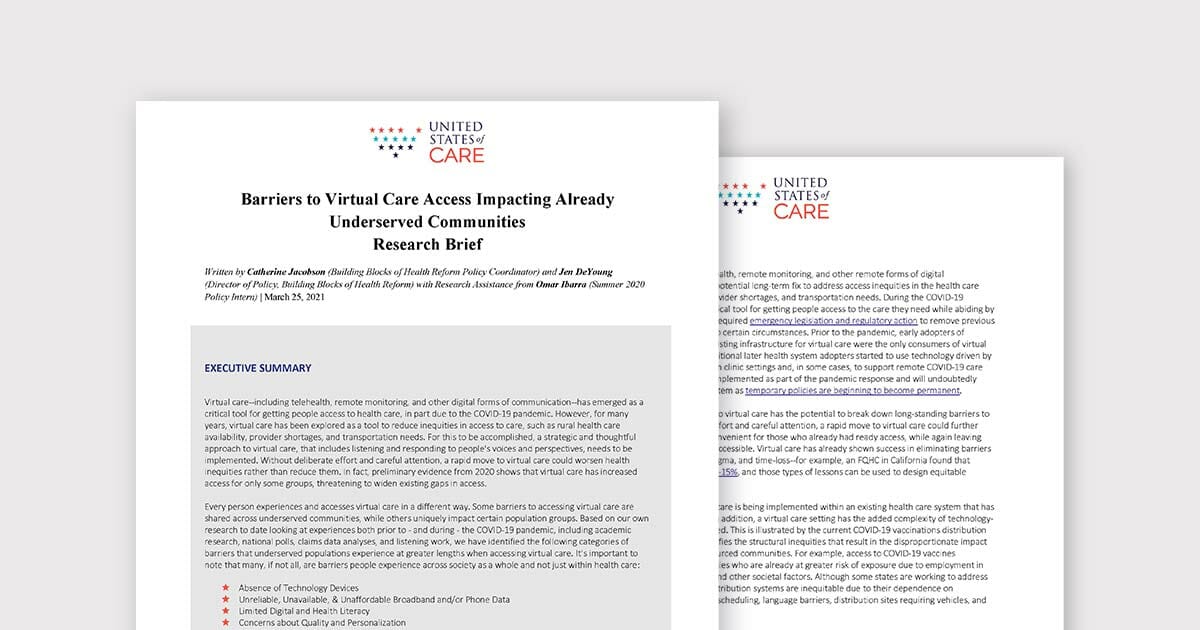Research, Resources, Virtual Care
Barriers to Virtual Care Access Impacting Already Underserved Communities

Executive Summary
Virtual care–including telehealth, remote monitoring, and other digital forms of communication–has emerged as a critical tool for getting people access to health care, in part due to the COVID-19 pandemic. However, for many years, virtual care has been explored as a tool to reduce inequities in access to care, such as rural health care availability, provider shortages, and transportation needs. For this to be accomplished, a strategic and thoughtful approach to virtual care, that includes listening and responding to people’s voices and perspectives, needs to be implemented. Without deliberate effort and careful attention, a rapid move to virtual care could worsen health inequities rather than reduce them. In fact, preliminary evidence from 2020 shows that virtual care has increased access for only some groups, threatening to widen existing gaps in access.
Every person experiences and accesses virtual care in a different way. Some barriers to accessing virtual care are shared across underserved communities, while others uniquely impact certain population groups. Based on our own research to date looking at experiences both prior to – and during – the COVID-19 pandemic, including academic research, national polls, claims data analyses, and listening work, we have identified the following categories of barriers that underserved populations experience at greater lengths when accessing virtual care. It’s important to note that many, if not all, are barriers people experience across society as a whole and not just within health care:
- Absence of Technology Devices
- Unreliable, Unavailable, & Unaffordable Broadband and/or Phone Data
- Limited Digital and Health Literacy
- Concerns about Quality and Personalization
- Lack of Physical Accommodations
- Language Proficiency Barriers
- Privacy Concerns
USofCare will be evaluating the extent to which existing policies and practices are meeting the needs of people–specifically, how they are addressing barriers or making them worse–as we continue our work. We plan to make recommendations on necessary changes to policies and practices that reflect people’s priorities and close gaps in access. You can join USofCare in our initiative to create a virtual care system that works for all of us by following the latest from us on Twitter @USofCare or by contacting us today